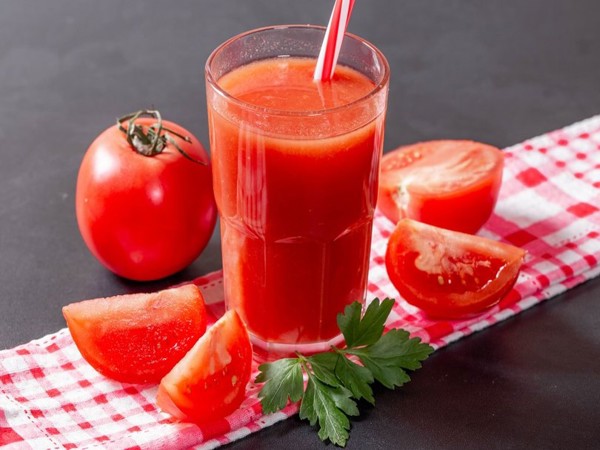It was an ordinary Saturday morning in Lagos. I was exhausted from the hustle and bustle of city life, constantly juggling work, family, and the ever-pressing demands of survival. I had never been a fitness enthusiast, but something had to change. My energy was depleting faster than I could replenish it, and my diet was largely to blame. That’s when I stumbled upon the concept of juicing tomatoes and vegetables.
At first, it sounded too simple to be true. I knew tomatoes were a common ingredient in many Nigerian meals, but could juicing them really offer the health benefits people were raving about? It was time to try it out for myself. Little did I know that this small change would become a game-changer for my health and overall wellbeing.
Step 1: Discovering the Power of Tomatoes
Tomatoes are packed with essential nutrients like vitamin C, potassium, folate, and antioxidants such as lycopene. Lycopene, in particular, is known to lower the risk of heart disease and cancer. In Nigeria, where access to fresh produce is relatively easy, tomatoes are an affordable way to improve health.
But eating raw tomatoes every day wasn’t practical for me. So I decided to juice them, adding other vegetables like carrots, cucumbers, and spinach to boost the nutritional content.
Step 2: Preparing the Juice
I started by buying a small, affordable juicer from the local market, which cost me around ?12,000 ($24). My first juice consisted of:
- 5 fresh tomatoes
- 3 carrots
- 2 cucumbers
- A handful of spinach
I added a pinch of salt and a splash of lime juice for flavor. The result? A refreshing, nutrient-dense juice that not only tasted amazing but also gave me an energy boost like never before.
Step 3: The Health Benefits
Within a few weeks of making tomato juice part of my daily routine, I noticed significant changes in my overall health. Here are some of the benefits I personally experienced:
Boosted Immune System: Thanks to the high levels of vitamin C in tomatoes, my body was better equipped to fight off common colds and infections. In Nigeria’s ever-changing weather, this was a huge advantage.
Improved Skin Health: Lycopene, the powerful antioxidant found in tomatoes, helped clear my skin. I had fewer breakouts, and my complexion was noticeably brighter. This is because lycopene fights free radicals, reducing the signs of aging and protecting the skin from harmful UV rays.
Better Digestion: Adding cucumbers and spinach to my juice provided a good source of fiber, which improved my digestion. I no longer felt bloated after meals, and my digestive system functioned more smoothly.
Heart Health: Studies have shown that the regular consumption of tomatoes can reduce the risk of heart disease, thanks to their high potassium content. For someone with a family history of heart conditions, this was particularly important.
Step 4: Making Juicing Affordable in Nigeria
The biggest concern I had before starting my juicing journey was the cost. However, I quickly realized that juicing can be done on a budget, especially in Nigeria where fresh tomatoes and vegetables are easily accessible.
Here’s how I kept my juicing routine affordable:
Buying in bulk: I would buy large quantities of tomatoes and vegetables from local markets in Lagos and refrigerate them. This not only saved me money but ensured I always had fresh produce at hand.
Using local vegetables: Instead of expensive imported vegetables, I relied on locally grown options like ugu leaves, waterleaf, and bitter leaf. These can easily be added to tomato juice to boost its nutritional value.
Reducing waste: After juicing, I would save the pulp to use in soups and stews, making sure no part of the tomato or vegetable went to waste. This is especially important in Nigerian households where minimizing waste is a key part of budgeting.
Step 5: Spreading the Word
As I continued to juice daily, I started sharing my journey with friends and family. Many of them were skeptical at first, but as they saw the changes in my energy levels and skin, they became more interested.
I even began to organize juicing workshops in my community. We discussed the health benefits, shared recipes, and encouraged each other to prioritize our health. It was amazing to see how something as simple as juicing tomatoes could make such a big difference in people's lives.
Step 6: Digital Tools to Track Progress
One of the most helpful things I did was to use digital tools to track my progress. I downloaded a free health app to monitor my daily nutrient intake and set reminders for juicing. By doing this, I was able to stay consistent and keep track of my health improvements.
In Nigeria, where access to healthcare can be limited, digital tools like these are a great way to stay on top of your health. Juicing isn’t a substitute for medical advice, but it is a proactive step toward better health.
Conclusion: The Juicing Journey
Juicing tomatoes and other vegetables has transformed my health in ways I never imagined. It’s an affordable, simple way to incorporate essential nutrients into your diet, particularly in Nigeria where fresh produce is readily available. By taking small, consistent steps, you can boost your immune system, improve your skin, and protect your heart – all while staying within budget.
If you're looking for a simple way to improve your health, give tomato juicing a try. Remember, health is wealth, and making small changes today can lead to huge benefits tomorrow.


.jpg)





.webp)






(0) Comment(s)
Write a comment